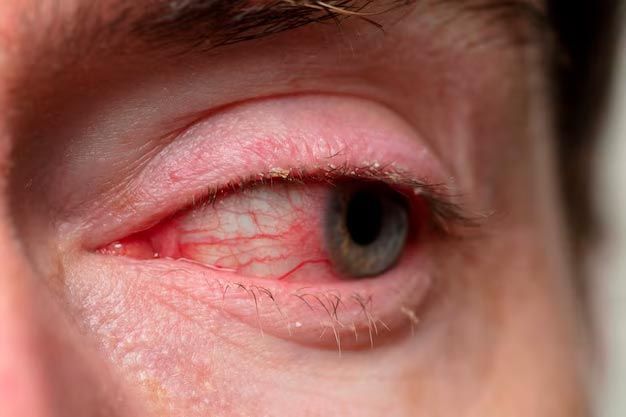October 29, 2024
As the weather warms up, many people welcome the sunshine and blooming flowers. However, for those who suffer from seasonal allergies, this change brings discomfort in the form of sneezing, itching, and red, watery eyes. These allergies, often accompanied by allergic conjunctivitis, affect millions across the U.S., making it essential to know how to manage the symptoms effectively. At Framebar, we specialize in comprehensive eye care, offering treatments for everything from seasonal allergies to more chronic eye conditions. If you’ve been searching for an “eye doctor near me” or need expert care for allergy-related eye issues, we’re here to help. What is Allergic Conjunctivitis? Allergic conjunctivitis occurs when your immune system overreacts to allergens such as pollen, dust mites, or animal dander, causing inflammation in the conjunctiva—the thin membrane covering the whites of the eyes and the inside of the eyelids. This condition triggers a release of histamines, resulting in a range of symptoms that can include: Red, irritated eyes Itchy eyelids and eyes Excessive tearing Swollen eyelids Discomfort or pain around the eyes If you’re experiencing these symptoms, searching for an “optometrist near me” or a “good eye doctor near me” can connect you with the care you need to address allergic conjunctivitis. Framebar provides both preventive care and targeted treatments to help reduce discomfort. Causes of Allergic Conjunctivitis Environmental allergens are the primary culprits for seasonal allergies. During spring and summer, tree and grass pollens are common triggers, while ragweed pollen dominates the fall. Indoor allergens—like pet dander or dust mites—can cause year-round allergic conjunctivitis. Even cosmetics or certain eye drops can irritate sensitive eyes. If you're struggling with symptoms that seem to persist no matter the season, it might be time for a comprehensive eye exam at Framebar. Our skilled optometrists offer tailored solutions for both seasonal and chronic allergy-related conditions. Tips to Manage Seasonal Allergies and Eye Irritation While avoiding allergens can help, it isn’t always practical. Here are a few steps to reduce exposure: Keep windows closed and use air conditioning during high-pollen seasons. Wear sunglasses and a hat outdoors to block airborne allergens. For indoor allergens, vacuum frequently and use allergen-proof covers on bedding. Additionally, artificial tears can help wash away allergens from your eyes, and cold compresses can provide relief from swelling and itching. At Framebar, our opticians offer high-quality blue light blocking glasses that protect eyes from digital strain and reduce irritation. It’s also important to avoid rubbing your eyes, as this can cause injuries like corneal abrasions or contribute to keratoconus, a progressive eye condition. If you're unsure about your symptoms, a quick search for "eye dr near me" can connect you with our specialists for a thorough evaluation. Treatment Options for Allergic Conjunctivitis If lifestyle changes aren't enough to manage your allergy symptoms, both over-the-counter and prescription treatments are available: Antihistamine Eye Drops: Options like Pataday, Zaditor, and Bepreve can reduce itching and redness. Oral Antihistamines: Medications such as Zyrtec, Claritin, and Allegra relieve nasal symptoms and eye irritation. However, some may cause drowsiness, so non-drowsy options are recommended. Vasoconstrictor Drops: These reduce redness but can lead to rebound effects if used too often. For more severe cases, our optometrists in Oceanside, NY may recommend short-term use of corticosteroid drops under careful supervision to avoid side effects like elevated eye pressure. When allergy symptoms persist despite these treatments, we might refer you to an allergist for immunotherapy or allergy shots.











